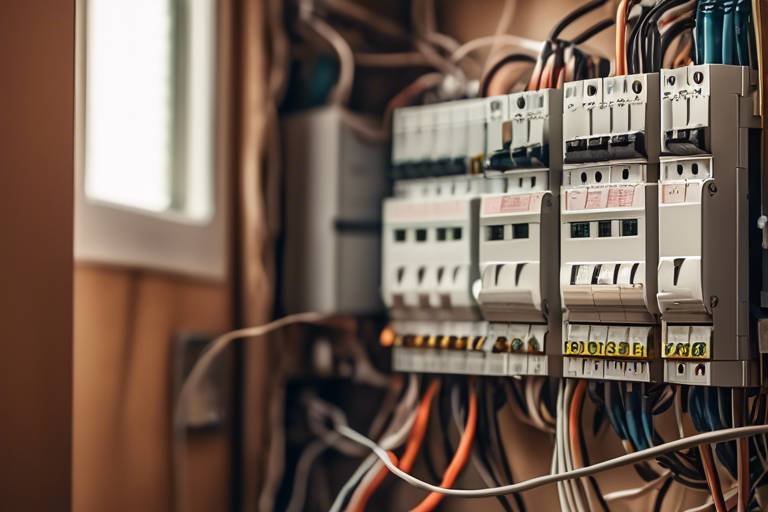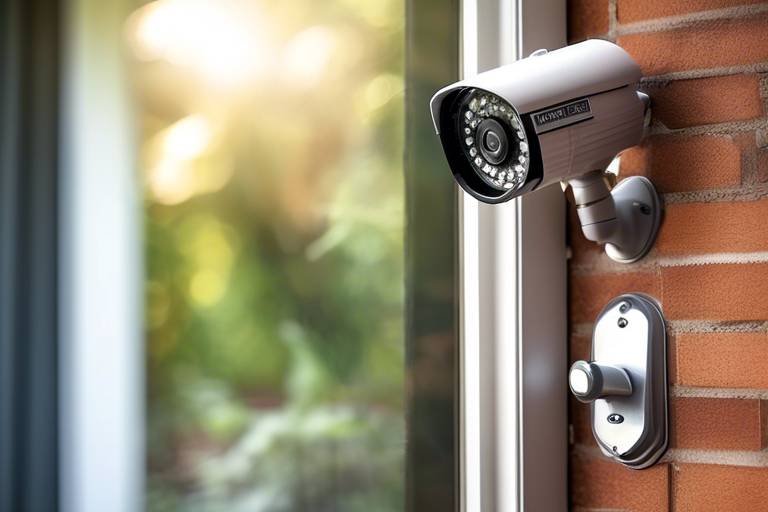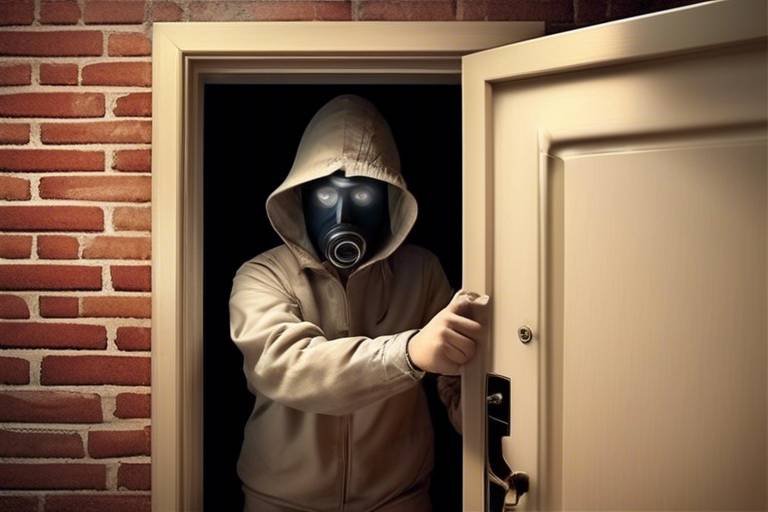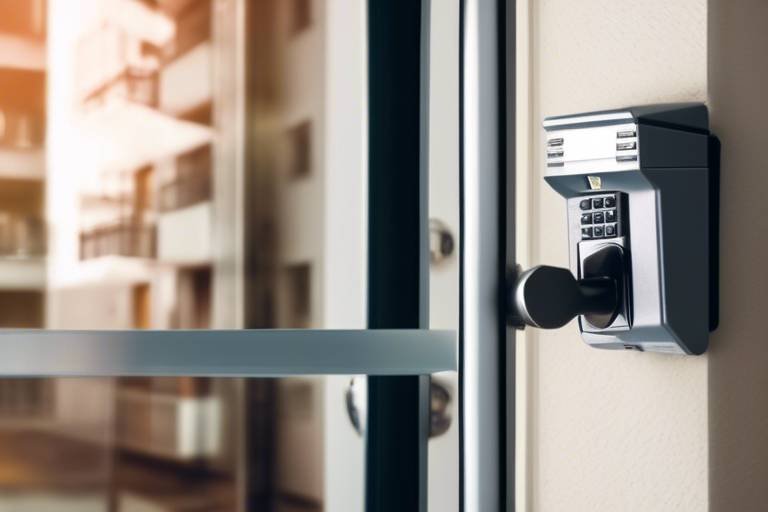Evaluating the Safety of Your Home's Electrical System
Ensuring the safety of your home’s electrical system is not just a matter of convenience; it’s a matter of life and safety. Every day, we rely on electricity for countless activities—from powering our lights and appliances to keeping our homes warm and connected. However, with this reliance comes the responsibility to understand the potential hazards that can lurk behind the walls of our homes. This article explores essential aspects of assessing your home's electrical safety, including potential hazards, maintenance tips, and the importance of professional inspections to ensure a secure living environment.
Electrical hazards can be as sneaky as a cat in a dark alley—often unnoticed until it’s too late. Common issues like overloaded circuits, faulty wiring, and outdated electrical systems can jeopardize safety and lead to accidents. An overloaded circuit occurs when too much current flows through a circuit, which can cause wires to overheat and potentially ignite a fire. Faulty wiring, on the other hand, may stem from poor installation or wear and tear over time. Lastly, outdated electrical systems may not be equipped to handle today’s energy demands, making them a ticking time bomb. Understanding these hazards is the first step in safeguarding your home.
Identifying the signs of electrical issues is crucial for maintaining safety in your home. Ignoring these signs can lead to catastrophic failures, so it’s important to stay vigilant. Warning signs include flickering lights, tripped breakers, and unusual odors. Each of these indicators can point to serious underlying issues that need immediate attention. For example, flickering lights might seem like a minor annoyance, but they can signal loose connections or faulty wiring that could escalate into a fire hazard if left unaddressed.
Flickering lights can be more than just an irritating flicker; they can indicate underlying electrical issues that need your attention. The potential causes could range from simple problems like loose bulbs to more complex issues such as faulty wiring. It’s like a warning light on your car’s dashboard—ignoring it could lead to bigger problems down the road. Addressing these signs promptly is essential to ensure that your home remains safe and secure.
Loose connections can lead to overheating and, in the worst-case scenario, electrical fires. It’s crucial to understand how to identify these connections. If you notice that your lights flicker or your outlets feel warm to the touch, it may be time to investigate further. Regularly checking the connections in your outlets and switches can help you catch these issues before they escalate.
Voltage fluctuations can wreak havoc on your appliances and electronics. Imagine your refrigerator struggling to keep your food cold because the voltage keeps dipping. This section examines the causes and consequences of voltage irregularities, highlighting the need for proper electrical management. If you notice that your electronics are malfunctioning or your lights dim unexpectedly, it might be a sign of voltage issues that need to be addressed.
Frequent tripped circuit breakers can indicate overloaded circuits or faulty appliances. If you find yourself resetting your circuit breaker more often than you’d like, it’s time to troubleshoot the issue. It could be as simple as unplugging a few devices or as complex as needing a new circuit installed. Knowing when to seek professional assistance is key to maintaining a safe electrical environment.
Regular electrical inspections are essential for ensuring safety in your home. Think of it as a health check-up for your electrical system. Just as you wouldn’t skip your annual physical, you shouldn’t overlook the importance of routine electrical checks. This section outlines the benefits of these inspections and the role of licensed electricians in identifying potential hazards. A professional can spot issues that you might miss, saving you from potential headaches—and hazards—down the line.
Hiring a licensed electrician for inspections can uncover hidden problems that could pose safety risks. Their expertise is invaluable, as they can identify issues that may not be visible to the untrained eye. This subsection emphasizes the value of professional expertise in maintaining a safe electrical system. Investing in a professional inspection can save you time, money, and peace of mind.
Performing DIY safety checks can help homeowners identify minor issues before they escalate. While it’s always wise to call in the professionals for major concerns, there are simple inspections you can do yourself. For instance, checking for frayed cords, ensuring outlets are not overloaded, and testing GFCI outlets can be done without any special training. This section provides practical tips for conducting these simple inspections and knowing when to call in a professional. Remember, a little proactive maintenance can go a long way in keeping your home safe.
- How often should I have my electrical system inspected? It is recommended to have a professional inspection every 3 to 5 years, but if you notice any signs of trouble, don’t hesitate to call an electrician sooner.
- What should I do if I smell burning plastic? Immediately turn off the power to that area and call a licensed electrician. This could indicate a serious electrical issue.
- Can I do my own electrical work? While minor tasks like changing light fixtures are often safe, it’s best to consult a professional for any major electrical work.

Understanding Electrical Hazards
When it comes to the safety of your home, understanding electrical hazards is crucial. These hazards can lurk in the most unexpected places, often hidden from plain sight. Imagine your electrical system as a complex network, much like the veins in your body, carrying energy to various parts of your home. If there's a blockage or a leak, it can lead to serious consequences. Common electrical hazards include overloaded circuits, faulty wiring, and outdated electrical systems. Each of these issues can jeopardize your safety and potentially lead to accidents.
Overloaded circuits are one of the most prevalent hazards in many homes. When too many devices are plugged into a single outlet, it can cause the circuit to overheat, leading to a fire risk. Think of it like trying to pour too much water into a small cup; eventually, it spills over. This is why it's essential to be mindful of how many appliances are connected to each circuit. Always check your circuit breaker panel to ensure that you're not exceeding the recommended load.
Another significant concern is faulty wiring. This can occur due to wear and tear, improper installation, or even pest damage. Faulty wiring is like a ticking time bomb; you may not see it, but it can cause sparks and fires if left unaddressed. Regularly inspecting your wiring, especially in older homes, can help you catch these issues before they escalate into a disaster.
Lastly, we have outdated electrical systems. If your home was built several decades ago, it may not be equipped to handle the demands of modern technology. Think about how much our electrical needs have changed; we now have multiple devices charging at once, high-powered appliances, and smart home systems. An outdated system may struggle to keep up, leading to increased risks. Upgrading your electrical system not only enhances safety but also improves functionality.
To summarize, here are some key electrical hazards to keep an eye on:
- Overloaded circuits
- Faulty wiring
- Outdated electrical systems
Recognizing these hazards is the first step toward creating a safer living environment. By understanding the risks associated with your electrical system, you empower yourself to take action and ensure your home remains a safe haven.

Signs of Electrical Problems
Identifying the signs of electrical issues is crucial for maintaining safety in your home. Ignoring these warning signs can lead to serious hazards, including electrical fires or appliance damage. So, what should you be on the lookout for? Let’s dive into some of the most common indicators that your electrical system might be in distress.
First up, we have flickering lights. Have you ever noticed your lights flickering or dimming unexpectedly? This can be more than just a minor annoyance; it can indicate underlying electrical problems. Flickering lights can be caused by a variety of issues, such as loose bulbs, faulty wiring, or overloaded circuits. Imagine driving with a faulty headlight; it’s not just inconvenient—it can be dangerous! So, if your lights are playing a game of hide and seek, it’s time to investigate further.
When it comes to flickering lights, the causes can be quite diverse. For instance, a simple loose connection in a light fixture might be to blame. However, it could also point to more serious issues like problems with your electrical panel or even the utility company's supply. Addressing these signs promptly is essential. Ignoring them could lead to overheating connections, which can spark fires. So, keep an eye on those lights!
Speaking of connections, loose connections are another major red flag. These can occur at outlets, switches, or within your electrical panel. When connections are loose, they can generate heat, leading to potential fire hazards. Think of it as a leaky faucet; if you don’t fix it, the problem only worsens over time. If you suspect loose connections, it’s vital to have them checked out by a professional electrician to ensure your home remains safe.
Another sign to watch for is voltage fluctuations. Are your appliances acting strangely? Maybe your refrigerator is humming louder than usual, or your television screen is flickering? These could be signs of voltage irregularities. Such fluctuations can not only affect the performance of your appliances but can also lead to their premature failure. It’s like driving a car with a faulty fuel gauge; you never know when you might run out of gas! Keeping your electrical system stable is crucial for the longevity of your devices.
Next, let’s talk about tripped circuit breakers. If you find yourself frequently resetting your circuit breakers, it’s a clear indication that something is amiss. This could be due to overloaded circuits from too many devices plugged in at once or faulty appliances drawing too much power. It’s essential to troubleshoot these issues to prevent further complications. If you’re unsure how to handle it, don’t hesitate to call in a professional electrician.
Frequent tripped circuit breakers can lead to frustration and can indicate overloaded circuits or damaged appliances. When troubleshooting, start by identifying the devices causing the issue. If it’s a single appliance tripping the breaker, it may need replacement or repair. However, if multiple breakers are tripping, it could signify a more serious problem within your electrical system. It’s always better to be safe than sorry, so if the problem persists, consult a licensed electrician for a thorough inspection.
In summary, being vigilant about these signs can help you maintain a safe and functional electrical system in your home. Remember, your safety is paramount, and when in doubt, don’t hesitate to seek professional help!
- What should I do if my lights flicker? If your lights flicker, check for loose bulbs or connections. If the problem persists, consult an electrician.
- How often should I have my electrical system inspected? It's recommended to have your electrical system inspected at least once every 3-5 years, or sooner if you notice any issues.
- Can I fix electrical issues myself? While some minor issues can be handled by homeowners, it's best to consult a licensed electrician for safety and expertise.

Flickering Lights
Flickering lights in your home can be more than just a minor annoyance; they often serve as a warning sign that something isn't quite right with your electrical system. Imagine walking into a room and being greeted by lights that seem to dance and flicker as if they have a mind of their own. This can be both unsettling and indicative of deeper issues lurking behind your walls. So, what could be causing this phenomenon? There are several potential culprits, and understanding them is crucial for maintaining a safe and comfortable living environment.
One of the most common reasons for flickering lights is loose bulbs. When a light bulb isn’t securely screwed into its socket, it can create intermittent connections, leading to that annoying flicker. This is an easy fix—just make sure to turn off the light and tighten the bulb. However, if the flickering persists even after securing the bulb, it may be time to explore other possibilities.
Another frequent cause is faulty wiring. If the wiring in your home is old, damaged, or improperly installed, it can lead to inconsistent power flow. This not only affects your lighting but can also pose serious safety hazards, including the risk of electrical fires. If you suspect faulty wiring, it's important to consult a licensed electrician who can conduct a thorough inspection and make necessary repairs.
Moreover, flickering lights can also be a sign of voltage fluctuations. When there is an inconsistency in the voltage supplied to your home, it can cause lights to dim or flicker. This can happen due to various reasons, such as an overloaded circuit or issues with the power supply from your utility company. To manage voltage fluctuations, consider using voltage stabilizers or surge protectors to safeguard your appliances and electronics.
In summary, while flickering lights may seem like a trivial issue, they can be indicative of more serious problems within your electrical system. Ignoring these signs can lead to bigger headaches down the road, including expensive repairs or even safety hazards. Therefore, it’s essential to address flickering lights promptly and, when necessary, enlist the help of a professional to ensure your home remains a safe haven.
- What should I do if my lights flicker? If your lights flicker, start by checking the bulbs. If tightening them doesn’t help, consider consulting an electrician.
- Can flickering lights cause fires? Yes, if the flickering is due to faulty wiring or loose connections, it can pose a fire hazard.
- How can I prevent flickering lights? Regular electrical inspections and ensuring that your wiring is up-to-date can help prevent flickering lights.

Loose Connections
Loose connections in your electrical system can be a silent yet dangerous threat lurking behind your walls. Imagine your electrical wires as a network of highways; when the connections are loose, it's like having potholes and detours that can cause major traffic jams—or worse, accidents. These loose connections can lead to overheating, which significantly increases the risk of electrical fires. Not only can this jeopardize your safety, but it can also damage your appliances and electronics, leading to costly repairs or replacements.
So, how do you spot these sneaky loose connections? First, look for signs like flickering lights, which may indicate that the connection isn't secure enough to handle the electrical load. If you notice any unusual sounds, such as buzzing or crackling, it's a red flag that something is amiss. Furthermore, if you feel heat emanating from outlets or switches, that's a definite sign that you should take action immediately.
To tackle loose connections, here are a few steps you can take:
- Turn Off Power: Always start by turning off the power at the circuit breaker to avoid any shock hazards.
- Inspect Outlets and Switches: Remove the faceplates and check for loose wires. Ensure that all connections are tight and secure.
- Check for Burn Marks: Look for any discoloration around the terminals, which can indicate overheating.
- Use a Multimeter: This handy tool can help you measure the voltage and ensure everything is working correctly.
However, while DIY fixes can be tempting, it's crucial to know your limits. If you’re not confident in your electrical skills, or if the problem persists after your attempts to fix it, it’s best to call in a licensed electrician. They have the expertise to identify and rectify issues that may not be immediately visible, ensuring your home remains a safe haven.
Q: What are the signs of loose electrical connections?
A: Signs include flickering lights, buzzing sounds, overheating outlets, and frequent tripped circuit breakers. If you notice any of these, it’s time to investigate further.
Q: Can I fix loose connections myself?
A: Yes, you can perform basic checks and tighten connections, but if you’re unsure or uncomfortable, it’s always safer to hire a professional electrician.
Q: How often should I check my electrical system for loose connections?
A: It's a good practice to inspect your electrical system at least once a year, or sooner if you notice any warning signs.
Q: What should I do if I find a loose connection?
A: Turn off the power to that circuit immediately and either tighten the connections yourself if you feel capable or contact a licensed electrician for assistance.

Voltage Fluctuations
Voltage fluctuations in your home can be more than just an annoyance; they can actually pose significant risks to your electrical system and appliances. Imagine trying to enjoy your favorite movie only for your TV to dim and flicker—frustrating, right? These fluctuations can stem from various sources, such as heavy appliances cycling on and off, or issues within the electrical grid itself. Understanding the causes and consequences of these irregularities is crucial for maintaining a safe and efficient electrical system.
One of the most common reasons for voltage fluctuations is the demand placed on your electrical system. When large appliances like air conditioners or refrigerators kick in, they draw a substantial amount of power, causing a temporary drop in voltage. This can lead to a cascade of problems, including:
- Overheating of Appliances: Appliances may struggle to operate efficiently, leading to premature wear and tear.
- Increased Energy Bills: Constant fluctuations can cause your appliances to work harder, increasing your energy consumption.
- Potential Damage: Sensitive electronics, such as computers and gaming consoles, may be at risk of damage from inconsistent power supply.
So, what can you do about voltage fluctuations? First, consider monitoring your electrical load. If you notice that certain appliances cause significant dips in voltage, it might be time to spread out their usage or upgrade your electrical system to handle the load more effectively. Additionally, installing a voltage regulator can help stabilize the voltage levels in your home, providing a more consistent power supply.
It's also essential to keep an eye on your circuit breakers. If you notice frequent tripping, it could be a sign that your system is struggling to handle the load, indicating a need for professional evaluation. Licensed electricians can assess your electrical system and recommend appropriate solutions to minimize fluctuations.
In conclusion, while voltage fluctuations may seem minor, they can lead to significant issues down the line. By understanding their causes and implementing preventive measures, you can help ensure that your home remains a safe and comfortable environment. Remember, a little vigilance goes a long way in electrical safety!
Q: What causes voltage fluctuations in my home?
A: Common causes include heavy appliances cycling on and off, faulty wiring, or issues within the electrical grid.
Q: How can I prevent voltage fluctuations?
A: You can monitor your electrical load, avoid using multiple heavy appliances simultaneously, and consider installing a voltage regulator.
Q: Are voltage fluctuations dangerous?
A: Yes, they can lead to overheating of appliances, increased energy bills, and potential damage to sensitive electronics.
Q: When should I call a professional electrician?
A: If you frequently experience voltage fluctuations or tripped circuit breakers, it’s best to consult a licensed electrician for a thorough evaluation.

Tripped Circuit Breakers
Tripped circuit breakers can be a common yet alarming issue in many homes. When a circuit breaker trips, it essentially acts as a safety switch that cuts off the electrical flow to prevent overheating or potential fires. Imagine your home's electrical system as a busy highway; when too many cars (or electrical devices) try to travel at once, the traffic light (or circuit breaker) turns red to prevent chaos. But what causes these interruptions, and when should you be concerned?
There are several reasons why your circuit breakers might trip frequently. One of the most common culprits is overloaded circuits. This occurs when too many devices are plugged into a single circuit, drawing more power than it can handle. Think of it like trying to fit too many passengers in a car—eventually, it just can't take it anymore! If you find yourself constantly resetting the breaker, it might be time to evaluate how many devices are connected to that circuit.
Another reason for tripped breakers is faulty appliances. If an appliance is malfunctioning or damaged, it can draw excessive current, leading to a trip. It's similar to a car that keeps stalling; no matter how many times you restart it, it just won't run smoothly. If you suspect an appliance is the problem, try unplugging it and see if the breaker still trips. If it doesn't, you might need to repair or replace that appliance.
In some cases, the issue may stem from faulty wiring. Old or damaged wiring can create short circuits, which are dangerous and require immediate attention. If you notice any signs of burning or smell something unusual, it’s crucial to act fast—this is not a problem to ignore. In such situations, it's best to consult a licensed electrician who can diagnose and fix the issue safely.
To help you better understand the potential causes of tripped circuit breakers, here’s a quick overview:
| Cause | Description |
|---|---|
| Overloaded Circuits | Too many devices connected to a single circuit. |
| Faulty Appliances | Malfunctioning devices drawing excessive current. |
| Faulty Wiring | Old or damaged wiring leading to short circuits. |
So, what should you do if your circuit breakers are tripping regularly? Start by identifying the pattern: Is it happening when you use a specific appliance, or does it seem random? This can provide valuable clues. If you can't pinpoint the issue or if the problem persists, it's time to call in a professional. A licensed electrician can perform a thorough inspection, ensuring your home remains safe and your electrical system functions efficiently.
Remember, while it might be tempting to ignore these signs, staying proactive about your electrical safety can save you from potential hazards down the road. Just like you wouldn’t ignore a warning light on your car’s dashboard, don’t overlook the warnings your electrical system is giving you!
- What should I do if my circuit breaker keeps tripping? - First, try to identify any appliances that may be causing the issue. If you can't find a solution, consult a licensed electrician.
- Can I reset a tripped circuit breaker myself? - Yes, but only if you feel comfortable doing so. If the breaker trips again, it’s best to call a professional.
- How often should I have my electrical system inspected? - It's recommended to have a professional inspection every 3-5 years or whenever you notice signs of electrical issues.

Importance of Regular Inspections
When it comes to the safety of your home, regular electrical inspections are not just a good idea; they are essential. Imagine your electrical system as the nervous system of your house. Just as you would regularly check your health to prevent serious issues, your home's electrical system requires the same attention. Over time, wear and tear, environmental factors, and even simple usage can lead to potential hazards that might not be immediately visible. Regular inspections serve as a proactive measure to identify these risks before they escalate into dangerous situations.
One of the primary benefits of routine electrical inspections is the early detection of problems. A licensed electrician can spot issues that an untrained eye might miss, such as frayed wires, loose connections, or outdated systems. These hidden dangers can lead to electrical fires, equipment damage, or even electrical shock. By investing in regular inspections, you are essentially safeguarding your home against these risks. Think of it as an insurance policy for your peace of mind.
Moreover, regular inspections can enhance the efficiency of your electrical system. An outdated or malfunctioning electrical system can lead to increased energy bills, as appliances work harder to draw power. During an inspection, electricians can recommend upgrades or adjustments that not only improve safety but also optimize energy efficiency. This means you could potentially save money in the long run while contributing to a more sustainable environment.
It's also important to note that many homeowners are unaware of local building codes and regulations that govern electrical systems. A professional inspection ensures that your home complies with these standards, which can be crucial if you plan to sell your property. Buyers are often wary of homes with electrical issues, and having a recent inspection report can provide them with the assurance they need. In fact, a well-documented inspection history can even enhance your home's market value!
For those who prefer a hands-on approach, performing DIY safety checks in between professional inspections can be beneficial. While it’s essential to leave complex issues to the experts, there are simple checks you can do yourself, such as:
- Inspecting visible wiring for any signs of wear or damage.
- Checking outlets for any discoloration or burning smells.
- Testing GFCI outlets to ensure they trip correctly.
However, knowing when to call in a professional is crucial. If you notice any of the above issues or if something feels off, don't hesitate to reach out to a licensed electrician. They have the training and experience to diagnose problems accurately and recommend the best course of action.
In summary, regular electrical inspections are a vital part of home maintenance. They not only protect your family and property from potential hazards but also enhance the efficiency of your electrical system and ensure compliance with safety regulations. By prioritizing these inspections, you are taking a significant step toward creating a safe and secure living environment.
- How often should I have my electrical system inspected? It is generally recommended to have a professional inspection at least once every 3-5 years, or more frequently if you notice any issues.
- Can I perform my own electrical inspections? While you can conduct basic DIY checks, it’s crucial to hire a licensed electrician for comprehensive inspections to ensure safety.
- What are the signs that I need an inspection? Signs include frequent tripped breakers, flickering lights, burning smells, or any visible damage to wiring or outlets.

Professional Inspections
When it comes to ensuring the safety of your home’s electrical system, are not just a luxury; they are a necessity. Think of your electrical system as the nervous system of your home. Just as you wouldn’t ignore persistent pain or discomfort in your body, you shouldn’t overlook the signs that your electrical system may need a check-up. A licensed electrician brings a wealth of knowledge and experience, allowing them to identify issues that might not be visible to the untrained eye. They can spot potential hazards that could lead to costly repairs or, worse, electrical fires.
So, what exactly does a professional inspection entail? Typically, an electrician will conduct a thorough examination of your electrical system, which includes:
- Assessing the condition of wiring and outlets
- Checking circuit breakers for proper function
- Testing GFCI outlets to ensure they are operational
- Evaluating the overall load on your electrical system
One of the key advantages of hiring a professional is their ability to provide a detailed report on the condition of your electrical system. This report often includes recommendations for repairs or upgrades, which can be invaluable for maintaining a safe living environment. Moreover, regular inspections can help you stay compliant with local building codes, which is essential if you plan on selling your home in the future.
Another crucial aspect of professional inspections is the peace of mind they provide. Knowing that a qualified expert has evaluated your home’s electrical system can alleviate the anxiety that comes with potential hazards. After all, the last thing you want is to be caught off guard by an unexpected electrical failure or, even worse, a fire caused by faulty wiring. It’s like having a regular health check-up; it’s better to catch problems early before they escalate into something more serious.
In addition to routine inspections, electricians can also help with specific issues that arise over time. For instance, if you’ve recently added new appliances or renovated your home, your existing electrical system may need an upgrade to handle the increased load. A professional can assess your current capacity and recommend necessary changes to ensure your home remains safe and efficient.
In conclusion, the value of professional inspections cannot be overstated. They not only help in identifying and resolving existing issues but also play a crucial role in preventing future problems. So, if you haven’t had your electrical system checked in a while, consider scheduling an inspection today. It’s a small investment that can save you from significant headaches down the road.
Here are some common questions homeowners have regarding professional electrical inspections:
- How often should I have my electrical system inspected? It’s recommended to have a professional inspection at least once every three to five years, or sooner if you notice any signs of trouble.
- What should I do if the electrician finds problems? Follow their recommendations. They may suggest repairs or upgrades to ensure your system is safe and efficient.
- Can I perform my own electrical inspection? While you can do basic checks, it’s always best to have a licensed electrician conduct a thorough inspection for safety reasons.

DIY Safety Checks
When it comes to ensuring the safety of your home’s electrical system, performing can be both empowering and essential. Think of it as giving your home a routine health check-up; just as you would monitor your own health, your home deserves the same attention. By taking a proactive approach, you can catch minor issues before they escalate into major problems. But what exactly should you be looking for? Let’s dive into some practical tips that can help you keep your electrical system in tip-top shape.
First and foremost, start with a thorough visual inspection. Look around your home for any signs of wear and tear on electrical cords and outlets. Are there any frayed wires or scorch marks? These are telltale signs that something is amiss. If you notice any damage, it’s crucial to address it immediately. Remember, ignoring these signs is like ignoring a warning light on your car’s dashboard; it could lead to serious consequences.
Next, pay attention to the outlets in your home. One handy trick is to use a simple outlet tester, which you can find at most hardware stores. This little device can help you determine if your outlets are wired correctly. If you discover any faulty outlets, it’s best to call in a professional electrician to resolve the issue. After all, safety should always come first!
You should also monitor your circuit breakers. If you notice that your circuit breakers are tripping frequently, it’s a sign that something isn’t right. This could indicate overloaded circuits or malfunctioning appliances. Take a moment to unplug devices that draw a lot of power, like space heaters or air conditioners, and see if the problem persists. If it does, it’s time to consult with an electrician.
Another simple check involves your light fixtures. Flickering lights can sometimes be attributed to loose bulbs, but they can also signal underlying electrical issues. To resolve this, ensure that the bulbs are securely tightened. However, if the flickering continues, it might be time to investigate further. You wouldn’t ignore a persistent headache, right? The same logic applies here.
Lastly, consider creating a schedule for regular checks. Just like you would routinely change the oil in your car, set reminders for yourself to perform these DIY inspections every few months. This habit can help you catch potential issues early on and keep your home safe.
In summary, while DIY safety checks are a fantastic way to stay on top of your home’s electrical health, they should never replace professional inspections. If you encounter any issues that seem beyond your expertise, don’t hesitate to call in a licensed electrician. Your home is your sanctuary, and it deserves the best care possible!
- How often should I perform DIY safety checks? It’s a good idea to check your electrical system every few months to catch potential issues early.
- What should I do if I find a damaged wire? If you find a damaged wire, it’s best to turn off the power and consult a licensed electrician for repairs.
- Can I fix electrical issues myself? Minor issues can sometimes be fixed with DIY methods, but for anything major or complex, it’s always safer to hire a professional.
Frequently Asked Questions
- What are the common signs that indicate electrical problems in my home?
Common signs of electrical issues include flickering lights, frequent tripped circuit breakers, and unusual odors coming from outlets or appliances. If you notice any of these symptoms, it's essential to investigate further to avoid potential hazards.
- How can I tell if my home’s electrical system is outdated?
If your home is over 30 years old and hasn't had an electrical upgrade, it might be time to consider an inspection. Look for fuses instead of circuit breakers, two-prong outlets, and signs of overheating or burnt wires as indicators that your system may be outdated.
- Are DIY electrical checks safe to perform?
Yes, but they should be done with caution. Simple checks, like inspecting outlets for damage or ensuring that light bulbs are secure, can be safe. However, if you encounter complex issues or are unsure, it's always best to call a professional electrician.
- How often should I have my electrical system inspected?
It's recommended to have a professional inspection every 3 to 5 years, or sooner if you notice any issues. Regular checks can help identify potential hazards before they become serious problems.
- What should I do if I experience frequent tripped circuit breakers?
Frequent tripped circuit breakers can indicate overloaded circuits or faulty appliances. Start by unplugging devices on the affected circuit and see if the problem persists. If it continues, contact a licensed electrician for a thorough inspection.
- Can I fix loose electrical connections myself?
While some homeowners may be comfortable tightening loose connections, it's crucial to ensure safety first. If you're not experienced with electrical work, it's safer to hire a professional to avoid risks like electrical fires.
- What are the dangers of overloaded circuits?
Overloaded circuits can lead to overheating, which increases the risk of electrical fires. It's essential to distribute electrical loads evenly and avoid plugging too many devices into one outlet to maintain safety.



















